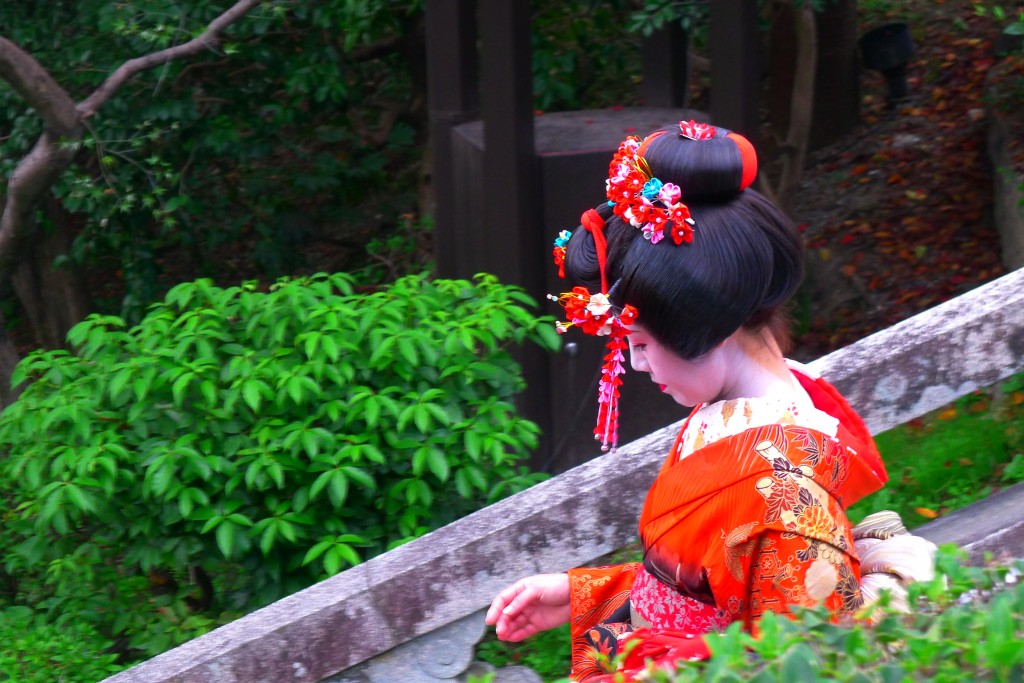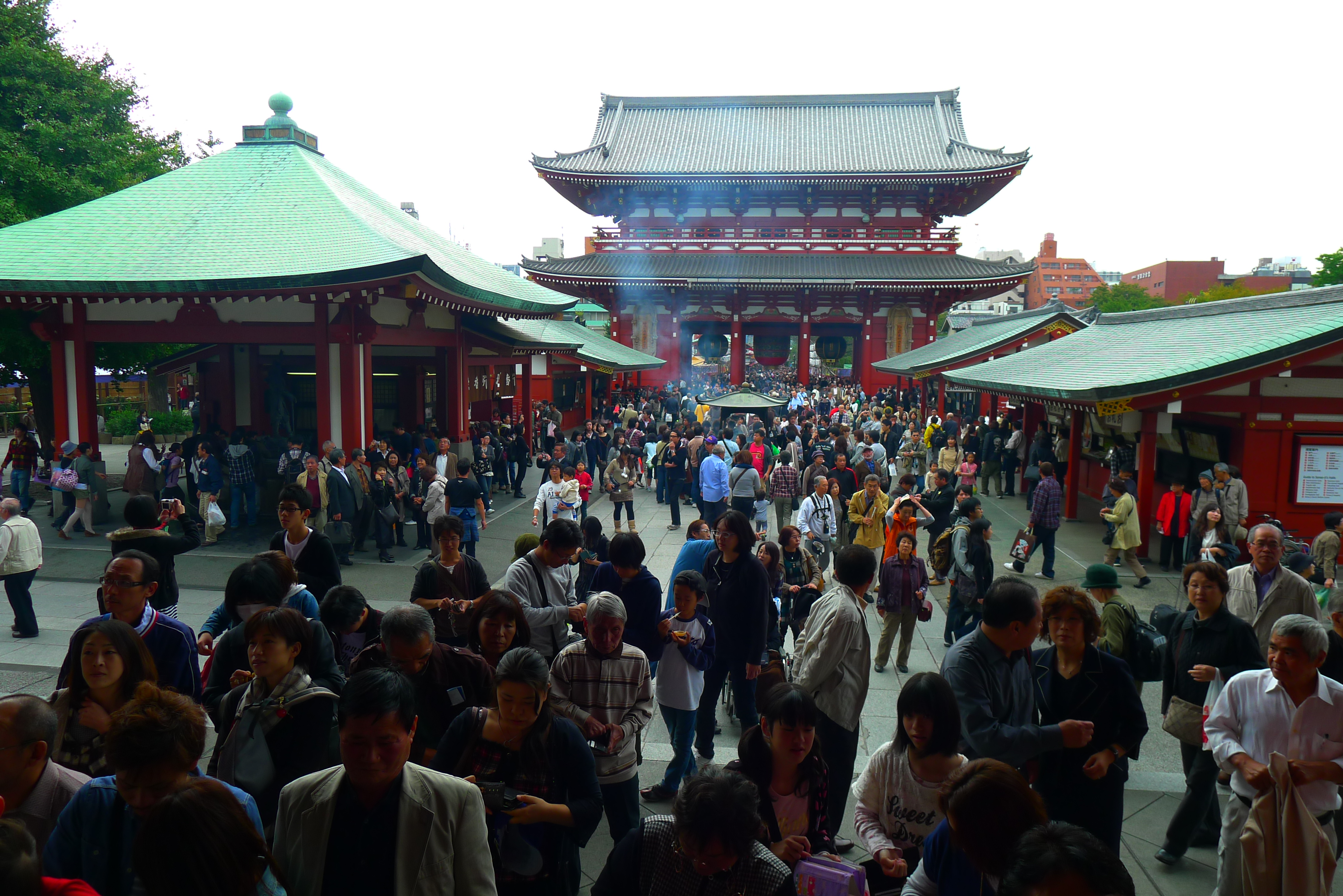It’s such a cliche to point out that Japan is a contrast of old and new traditional and modern, but the comparison keeps coming up because it’s true, and is a part of the country’s cultural DNA. It would be a surprise not to see some people — women, men, old, young, children — dressed in traditional kimono at ancient temples and shrines. It’s not unusual to have a contemplative (dare I say, zen-like) centuries-old spiritual site plopped into the middle of one of the world’s most bustling megalopolises. Japan is home to 14 of UNESCO’s World Heritage Sites.
So it makes sense for me to start this series of blog posts with a photo of a geisha (or a maiko, a geisha-in-training) I saw seemingly floating amidst the crowds of tourists at Kiyomizuedera, one of the thousands of amazing temples scattered throughout Kyoto, the city that contains the soul of Japan. The geisha is a romantic stereotype of Old Japan, and yet, the tradition of geishas performing ancient music and dance continues today.
I returned this month from a two-week trip to Japan with my wife Erin Yoshimura and my mom, Junko. We traveled there for several reasons:
First, because Erin has never met my mother’s family in Hokkaido, the northernmost island of Japan.
Second, because as Japanese Americans, we both believe it’s important to connect with our roots and appreciate where our values come from and why we think and behave the way we do in the United States.
Third, because we think it’s a cool idea to bring out American side to Japan and see how it’s different from Japanese society.
And fourth, because traveling to Japan is a great way for people around the world to support Japan’s recovery from the March 11 earthquake and tsunami that devastated the Tohoku region of northeast Honshu, Japan’s main island.
According to an Oct. 5 report from the World Travel and Tourism Council, tourism to Japan fell by 62% and 50% in April May over the previous year because of the disasters (including the man-made nuclear disaster at Fukushima). It’s been improving in the months since — in June and July tourism was 36% below 2010 levels. That’s a huge loss for a country that is the third-largest tourism economy in the world.
No, we didn’t visit Tohoku. We flew to Narita Airport outside Tokyo and took a connecting flight to Chitose, the airport that serves Sapporo in Hokkaido, the northernmost island of Japan. We spent a couple of days in Sapporo and met with my uncle Fumiya Mori and aunt Mistuko, then took trains to Nemuro, my mom’s hometown on the easternmost tip of Hokkaido. We spent several days there with my uncle Kazuya Mori and aunt Eiko (I adore her) and got to visit Akan National Park (sort of like Japan’s Yellowstone) and the Ainu Village that showcases the culture of the native people of Japan. From Hokkaido we flew to Tokyo and spent four busy days there, then took the Shinkansen (bullet train) to Hiroshima. We spent a coupe f days there, and visited the powerful Peace Memorial Park, which forever commemorates the atomic bomb blast of Aug. 5, 1945. We ended the trip in Kyoto before flying home from Osaka’s Kansai Airport.
Two weeks is a long trip, but it was worth it to squeeze in such a diverse array of destinations and see Japan from the dual perspective of foreign tourist and someone coming home after a prolonged absence.
LINKS:
View Day-by-day photo albums on Facebook from our trip to Japan.
View 34 short videos on YouTube of our trip to Japan.







 The media are reporting on how
The media are reporting on how  Rizzuto, who is half-Japanese, based that first book in part on her mother’s experience of being interned at
Rizzuto, who is half-Japanese, based that first book in part on her mother’s experience of being interned at 






